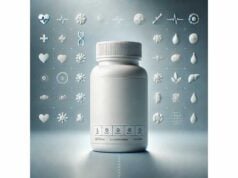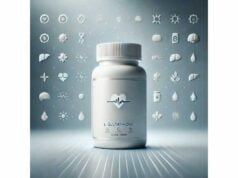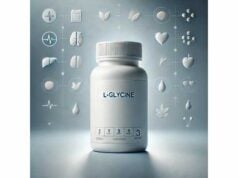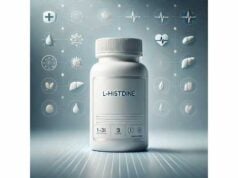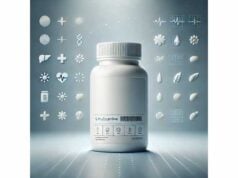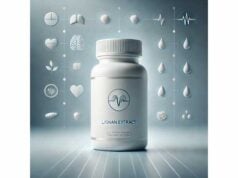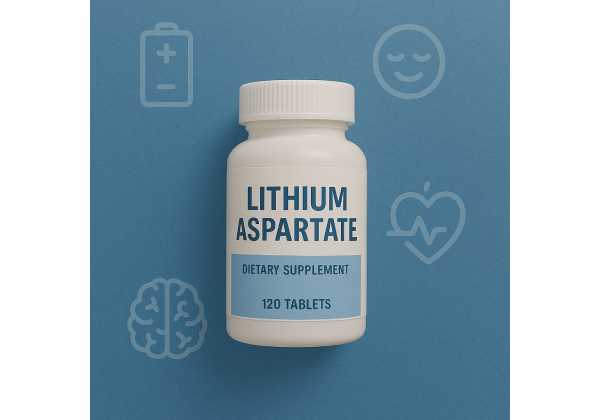
Lithium aspartate is a dietary supplement that combines lithium—a naturally occurring alkali metal—with the amino acid aspartic acid. It is marketed for mood support, stress resilience, and cognitive health at doses far lower than prescription lithium used for bipolar disorder. Because lithium has a narrow safety margin in medical use, any over-the-counter form deserves careful scrutiny. This guide explains what lithium aspartate is and how it differs from other lithium salts, where the evidence stands for low-dose use, practical dosing considerations, interactions that matter, safety red flags, and who should avoid it. You will also learn how to read labels, convert “milligrams of lithium aspartate” into elemental lithium, and build sensible expectations. If you are considering lithium aspartate for mood or brain health—or you have already started—use this article to understand the potential benefits and real-world risks so you can make an informed, measured decision with your healthcare professional.
Key Insights
- Low-dose lithium (in any salt form) is explored for mood stability and neuroprotection, but evidence for lithium aspartate specifically is limited.
- Elemental lithium intake from supplements commonly ranges 0.5–5 mg/day; higher amounts raise risk without proven added benefit.
- Lithium interacts with kidney function, hydration, and drugs (NSAIDs, ACE inhibitors, ARBs, thiazides); monitor closely or avoid.
- Avoid use in pregnancy, breastfeeding, significant kidney/thyroid disease, or bipolar disorder without medical supervision.
- Choose products that disclose elemental lithium per serving, not just the salt weight; dose with food and adequate fluids.
Table of Contents
- What is lithium aspartate?
- Does it work and why?
- How to take it and how much?
- Factors that shape your response
- Common mistakes and troubleshooting
- Safety, interactions, and who should avoid
- Evidence snapshot and research gaps
What is lithium aspartate?
Lithium aspartate is a compound salt in which lithium is paired with aspartic acid (an amino acid your body naturally uses). In supplements, the active of interest is elemental lithium—the lithium ion itself—not the aspartate carrier. Manufacturers may list “lithium aspartate 20 mg,” which can be misleading because only a fraction of that weight is elemental lithium. Depending on the exact salt ratio and hydration state, 20 mg lithium aspartate typically yields about 1–5 mg of elemental lithium. Always seek labels that state elemental lithium per serving.
How it differs from medical lithium.
Clinically prescribed lithium for bipolar disorder is almost always lithium carbonate (occasionally citrate), dosed to achieve serum lithium concentrations ~0.6–1.0 mmol/L under medical monitoring. Supplement products target much lower intakes that do not approach therapeutic serum levels. While low-dose strategies are being investigated for mood and neuroprotective effects, they are not substitutes for prescription lithium therapy and do not warrant self-titration.
Why the salt matters—and why it might not.
The salt (aspartate, orotate, carbonate, citrate) can influence tablet size, solubility, taste, and possibly absorption rate, but after dissolution in the gut, lithium enters the body as Li⁺ regardless of the counter-ion. Claims that a particular salt “targets the brain better” remain unproven in humans at typical supplement doses. What matters most:
- Elemental lithium dose you actually ingest.
- Kidney handling, hydration, and sodium intake, which govern lithium retention.
- Drug interactions that increase serum lithium levels.
What people use it for.
Commonly cited goals include mood steadiness, stress buffering, sleep quality, and cognitive aging. Some users are interested because ecological studies link trace lithium in drinking water with lower suicide rates, and separate clinical literature shows robust benefits of therapeutic-dose lithium for bipolar disorder. However, translating those observations to low-dose supplements requires caution and candid expectation setting (see the evidence section below).
Quality points when choosing a product.
- Elemental lithium disclosed in mg (not just salt weight).
- Low, conservative dose per capsule (for example, 1 mg elemental lithium).
- Third-party testing for identity and heavy metals.
- Transparent excipients and batch/lot information.
Bottom line: lithium aspartate is simply a vehicle for delivering small amounts of lithium ion. The dose, your renal physiology, and concurrent medications determine both effects and safety.
Does it work and why?
What lithium does biologically (short, plain-English version).
Lithium affects intracellular signaling nodes involved in neuroplasticity, inflammation, circadian biology, and mitochondrial function. Well-known targets include GSK-3, inositol monophosphatase, and pathways that regulate BDNF and autophagy. At therapeutic doses, these actions underpin mood stabilization and possible neuroprotection. The open question is how much of this translates at supplement-level intakes (e.g., 1–5 mg elemental lithium per day).
Where the signal is strongest—and where it is not.
- Robust at prescription doses: Bipolar disorder treatment and relapse prevention rely on dose-dependent serum levels with routine labs. This is the gold-standard use of lithium—but it does not validate self-supplementation for psychiatric illness.
- Suggestive at low doses: Research interest in “micro/low-dose” lithium explores cognitive aging, mood symptoms, and suicidality risk. The trend of findings is intriguing (for example, favorable associations between trace lithium in water supplies and suicide rates, and small trials or reviews considering low-dose outcomes), but evidence remains mixed and not salt-specific. Lithium aspartate has no unique proof that surpasses other salts at the same elemental dose.
- Insufficient for specific claims: There are no large, definitive randomized trials establishing lithium aspartate for anxiety, depression, ADHD, or dementia prevention at supplement doses.
Why some people report benefits at very low doses.
Two possibilities stand out:
- Sensitive pathways: Some intracellular targets may respond to low nanomolar changes in Li⁺ in specific cell types or brain regions, leading to subtle effects on sleep regularity, stress reactivity, or mood variability in susceptible individuals.
- Placebo and context: Changes in routine, hydration, or concurrent lifestyle modifications (sleep, sunlight exposure, therapy) can coincide with supplementation and account for perceived improvements.
What outcomes are realistic?
- Most realistic: small, gradual improvements in mood steadiness or sleep regularity in some users; no change in many others.
- Less likely: large, rapid changes in depression or anxiety symptoms without medical therapy and lifestyle foundations.
- Not appropriate: using lithium aspartate to replace prescribed lithium or other psychiatric medicines.
Time course.
If benefits occur, they typically appear over 2–6 weeks of consistent use. Stopping often leads to a return to baseline within days to weeks. Because individual responses vary widely, a time-limited trial with structured self-ratings (mood, sleep, daytime energy) offers the most honest assessment.
Take-home: Mechanistic plausibility exists for low-dose lithium in general, but high-quality human evidence for lithium aspartate specifically is limited, and any effects are likely to be modest.
How to take it and how much?
Start low, verify elemental lithium, and go slow.
Supplement labels may list the salt amount (“lithium aspartate 20 mg”), which is not the same as elemental lithium. Aim to buy products that clearly state “elemental lithium: X mg per capsule.” When that is not available, contact the manufacturer or choose a different brand.
Common supplemental ranges (adults).
- Conservative daily intake: 0.5–1 mg elemental lithium, taken with food.
- Typical trial range: 1–2 mg elemental lithium once daily for 4–6 weeks, then reassess.
- Upper bound without medical labs: ≤5 mg elemental lithium/day. Exceeding this increases the risk of accumulation and interactions without proven added benefit for general wellness goals.
Timing and administration.
- Take with a meal and adequate water to reduce GI upset and support predictable absorption.
- Dose at the same time each day (morning or evening) to align with your self-ratings of mood/sleep.
- Do not combine with other lithium-containing products (e.g., multiple “mood” stacks) unless a clinician advises and monitors you.
Special situations.
- Heat, illness, fasting, low-carb diuresis, or heavy training increase dehydration risk and can raise lithium levels. On such days, skip your dose and re-hydrate.
- Travel or altitude: prioritize hydration and sodium balance; when in doubt, hold the supplement.
- If you take interacting medicines (see safety section), do not start without medical input; if already taking, discuss immediate pause and monitoring.
How to evaluate your trial.
- Track sleep onset, night awakenings, irritability, anxiety, and daytime energy using a 0–10 scale for 14 days before and during supplementation.
- If no meaningful change by 6 weeks, discontinue and re-evaluate other foundations (sleep, exercise, light exposure, therapy).
- If benefits appear, consider periodic breaks (e.g., 2–4 weeks off every 3–4 months) to confirm continued need and minimize accumulation risk.
Who should have labs?
Anyone taking >2 mg elemental lithium/day for more than 8–12 weeks, anyone on interacting medications, or anyone with renal, thyroid, or parathyroid issues should speak with a clinician about baseline and periodic labs (renal panel, thyroid function, calcium, and—if doses are higher—serum lithium).
Never self-titrate toward prescription-level effects. Those regimens require regular serum monitoring and clinical supervision that are not optional.
Factors that shape your response
1) Kidney function and hydration
Lithium is handled by the kidneys much like sodium. Dehydration, low sodium intake, or anything that reduces kidney filtration raises lithium retention. This is why heat, gastroenteritis, and aggressive diuretic regimens can transform a previously tolerated dose into a problematic one.
2) Sodium and fluid balance
Sudden dietary shifts—particularly very low-sodium diets or keto-induced diuresis—can increase lithium levels. Conversely, stable, adequate fluid and sodium intake help maintain predictable handling.
3) Drug interactions that increase lithium levels
Several common medications decrease lithium clearance:
- NSAIDs (ibuprofen, naproxen, diclofenac).
- ACE inhibitors (e.g., lisinopril) and ARBs (e.g., losartan).
- Thiazide diuretics (e.g., hydrochlorothiazide).
- Some loop diuretics and potassium-sparing diuretics can also interact.
- Dehydration-promoting drugs/supplements (excess caffeine, certain herbal diuretics) may compound risk.
4) Thyroid and parathyroid sensitivity
Lithium can affect thyroid hormone release and calcium–parathyroid regulation, particularly at higher doses or with long exposure. People with hypothyroidism, autoimmune thyroid disease, or hyperparathyroidism should involve their clinicians before taking any lithium-containing product.
5) Age and body size
Older adults, those with lower body water, and people with reduced renal reserve are more susceptible to accumulation. When in doubt, lower the dose and lengthen the evaluation period.
6) Pregnancy and breastfeeding
Avoid. Lithium crosses the placenta and enters breast milk. Even trace supplementation adds uncertainty, especially when combined with dehydration or interacting drugs.
7) Baseline diet and lifestyle
If you already prioritize sleep, daytime light, exercise, omega-3s, and psychotherapy (when appropriate), the marginal signal from low-dose lithium—if any—is more likely to be small. For some people with irregular sleep or highly variable routines, small changes in circadian stability may feel meaningful.
8) Expectations and measurement
People who track outcomes (sleep metrics, mood ratings) make better decisions. Those relying on diffuse impressions risk attributing normal week-to-week variation to a new supplement.
Net: Your physiology and context determine whether a low dose feels helpful, neutral, or problematic—and whether it remains safe over time.
Common mistakes and troubleshooting
Mistake 1: Confusing salt weight with elemental lithium.
Labels may tout “lithium aspartate 20 mg” without revealing how much elemental Li⁺ that provides. Solution: choose brands that state elemental lithium; if not disclosed, skip.
Mistake 2: Using lithium aspartate as a substitute for prescription care.
Low-dose supplements do not reproduce the robust, dose-dependent benefits of medical lithium for bipolar disorder. If you have a mood disorder diagnosis, involve your clinician and do not self-replace therapy.
Mistake 3: Ignoring interactions and hydration.
Starting lithium while taking NSAIDs, ACE inhibitors/ARBs, or thiazides, or during illness/heat exposure can elevate lithium levels. Solution: coordinate with a clinician; hold dosing during dehydration or intercurrent illness.
Mistake 4: Chasing effects by escalating dose.
More is not necessarily better and can be harmful. If 1–2 mg elemental lithium/day shows no benefit after 6 weeks, stop rather than escalating.
Mistake 5: Stacking multiple “mood” formulas.
Different products may each contain small lithium amounts, adding up. Read all labels to avoid unintentional cumulative dosing.
Troubleshooting symptoms and steps.
- New GI upset, thirst, fine tremor, or excessive urination: reduce dose or stop; increase fluids; discuss with a clinician if symptoms persist.
- Worsening fatigue, brain fog, or mood flattening: hold supplementation and reassess sleep, iron/B12 status, thyroid health, and medications.
- Headache or dizziness during heat or illness: stop immediately, rehydrate with electrolytes, and seek care if symptoms continue.
- Sleep disruption: some users feel more alert if dosed late; shift to morning with food or discontinue.
Smart discontinuation.
At supplement-level dosing, you can usually stop abruptly. If you have been taking higher daily amounts (≥5 mg elemental) for months, consider tapering over 1–2 weeks while monitoring for rebound insomnia or irritability.
Safety, interactions, and who should avoid
Key safety reality: Lithium has a narrow therapeutic window in medical contexts; toxicity can occur even at concentrations near the therapeutic range when clearance drops. Although supplement doses are far lower, the same physiology applies—just with a wider buffer. Respect that buffer.
Symptoms that should prompt immediate stop and medical advice (especially if on interacting drugs or dehydrated):
- Worsening tremor, confusion, ataxia (clumsiness), slurred speech, severe nausea/vomiting, extreme thirst, or heavy urination.
- Cardiac red flags: palpitations, syncope.
- Neurologic changes: profound drowsiness, agitation, or seizures.
Drug interactions of greatest concern (avoid or use only with clinician approval):
- NSAIDs (ibuprofen, naproxen, diclofenac): reduce renal lithium clearance.
- ACE inhibitors / ARBs (lisinopril, enalapril; losartan, valsartan): can raise lithium levels unpredictably.
- Thiazide diuretics (hydrochlorothiazide) and some other diuretics: increase lithium retention.
- Dehydrating agents (excess caffeine or herbal diuretics): may compound risk.
- Serotonergic combinations: rare risk of serotonin syndrome when lithium is combined with multiple serotonergic agents—this is most relevant at medical doses but deserves caution.
Organ systems to watch over long exposure.
- Kidneys: polyuria and reduced concentrating ability are well-described at medical doses; very low doses are less studied but still call for prudence if you have renal disease.
- Thyroid: lithium can blunt thyroid hormone release; monitor if you are at risk or notice symptoms of hypothyroidism (fatigue, cold intolerance).
- Parathyroid/calcium: long-term lithium therapy has been linked to hyperparathyroidism; relevance at low doses is uncertain but worth noting.
- Liver: clinically significant liver injury from lithium is uncommon; mild enzyme changes may occur in some individuals.
Who should not use lithium aspartate (without specialist guidance).
- Pregnant or breastfeeding individuals.
- Children and adolescents (no role for OTC lithium).
- People with significant kidney disease, dehydration tendencies, or uncontrolled thyroid/parathyroid disorders.
- Anyone with bipolar disorder or major depression who is not under clinician care; do not replace prescribed therapies.
- People taking NSAIDs frequently, ACE inhibitors/ARBs, or thiazide diuretics—unless a clinician reviews and monitors you.
Practical safety checklist.
- Use ≤2 mg elemental lithium/day for an initial 4–6 week trial, with food and good hydration.
- Skip doses during fever, vomiting/diarrhea, heat waves, hard training days, or when you need NSAIDs.
- Reassess quarterly; if continuing long term, discuss basic labs with your clinician.
Evidence snapshot and research gaps
What supports exploring low-dose lithium in general?
- Mechanistic plausibility: lithium modulates signaling relevant to neuroplasticity and mood regulation, even at lower exposures in some models.
- Population signals: ecological work links trace lithium in drinking water with lower suicide rates; these studies are associative, not proof of benefit from supplements.
- Clinical literature at higher doses: prescription lithium remains a cornerstone for bipolar disorder, with well-defined serum targets and strong outcome data.
Where the evidence is thin for supplements—and for lithium aspartate in particular.
- Salt-specific data: There is no convincing human evidence that the aspartate salt offers unique advantages over other salts at the same elemental lithium dose.
- Randomized trials at micro-doses: Small studies and systematic reviews examine low-dose lithium, but large, long-duration, salt-specific RCTs are lacking for common OTC use cases (stress, sleep, everyday mood).
- Safety at scale: Serious adverse events at low doses are rare in reports, yet case reports of toxicity from OTC lithium products exist, typically involving higher-than-labeled intake, stacking, dehydration, or drug interactions. Proactive labeling of elemental lithium and consumer education would help reduce risk.
How to interpret the totality.
- Promising but unproven for everyday wellness goals at micro-doses.
- Clearly beneficial only in clinical psychiatric use at medically supervised dosages.
- Risk management is essential because lithium’s renal handling and common medication interactions can change a “low dose” into a problem under the wrong conditions.
Priority research needs.
- Dose–response trials of 0.5–5 mg elemental lithium/day with standardized outcomes (mood variability, sleep, cognitive metrics).
- Salt comparisons (aspartate vs citrate vs carbonate at equal elemental doses).
- Longitudinal safety in older adults and in people on common interacting medications.
For now, treat lithium aspartate as a careful experiment—not a cure-all—and make decisions with your clinician, especially if you take other medications or have kidney/thyroid considerations.
References
- Lithium Toxicity — 2024 (Guideline/Review)
- Lithium — 2019 (LiverTox Monograph)
- Lithium: how low can you go? — 2024 (Systematic Review/Commentary)
- Lithium toxicity from an internet dietary supplement — 2007 (Case Report)
- Identifying the neuropsychiatric health effects of low-dose lithium: a systematic review — 2022 (Systematic Review)
Disclaimer
This information is educational and does not replace personalized medical advice, diagnosis, or treatment. Lithium—at any dose—can interact with medications and medical conditions. Do not start, stop, or change any supplement or prescription without consulting a qualified healthcare professional who can consider your history, laboratory results, and current treatment plan. If you experience symptoms of possible toxicity (worsening tremor, confusion, severe nausea, heavy urination, ataxia), stop the supplement and seek medical care immediately.
If this article helped you, please consider sharing it on Facebook, X (formerly Twitter), or your preferred platform, and follow us for more evidence-based guides. Your support helps us continue producing high-quality, trustworthy content.

